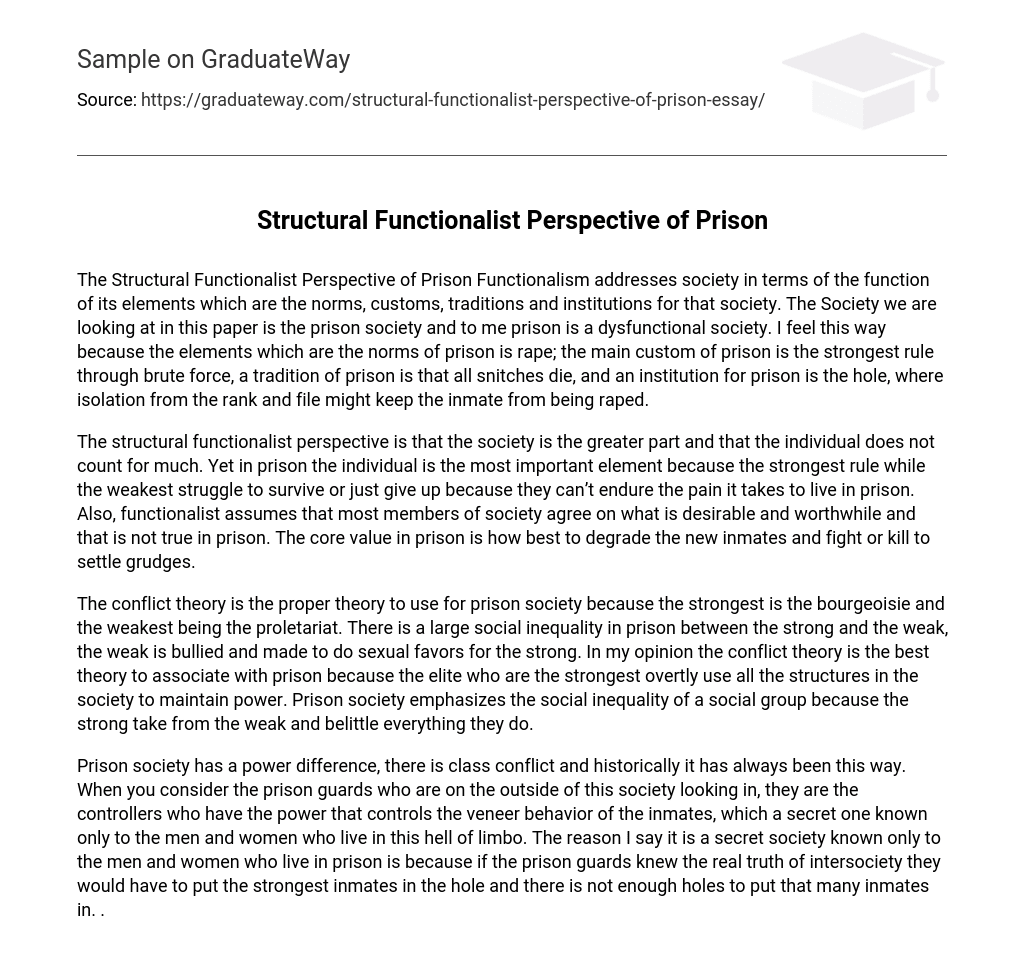The Structural Functionalist Perspective of Prison Functionalism analyzes society based on the functionality of its elements, such as norms, customs, traditions, and institutions. This paper focuses on prison society, which is considered dysfunctional. In prison, rape is a norm, brute force determines the strongest rule as a custom, snitches are traditionally killed, and the hole serves as an institutional means of isolating inmates to prevent rape.
The perspective of structural functionalism posits that society is paramount, with the individual holding minimal significance. However, in prison, the individual becomes the primary determinant, as the strong enforce dominance while the weak grapple to survive or succumb to the unbearable pain that prison life entails. Moreover, the assumption made by functionalists that society members generally agree on desirable and valuable aspects does not hold true in prison. The predominant value within the prison context revolves around degrading newly admitted inmates and engaging in violent confrontations or even murder to settle grievances.
The conflict theory is the most suitable theory to apply to prison society due to the dominance of the bourgeoisie as the strongest group and the proletariat as the weakest. In prison, there exists a significant imbalance in social status between the powerful and the vulnerable, with the latter being subjected to bullying and coerced into providing sexual favors for the former. In my perspective, the conflict theory aligns best with prison dynamics because the elite, who are the strongest, openly exploit all aspects of the societal structure to maintain their power. The prison society underscores the social inequality prevalent within a certain social group as the powerful systematically exploit and demean the actions of the weaker individuals.
Within the prison society, there exists a power disparity and class conflict that has persisted throughout history. The prison guards, situated outside this society, act as controllers who possess the power to manipulate the surface behavior of the inmates. However, this control remains veiled, known only to those men and women who endure the torment of this purgatory-like existence. The reason why I regard this as a clandestine society exclusive to the inmates is that if the prison guards were aware of the true nature of this intersociety, they would have no choice but to isolate the strongest inmates in confinement. Yet, there are insufficient facilities available to house such a large number of prisoners in solitary confinement.





